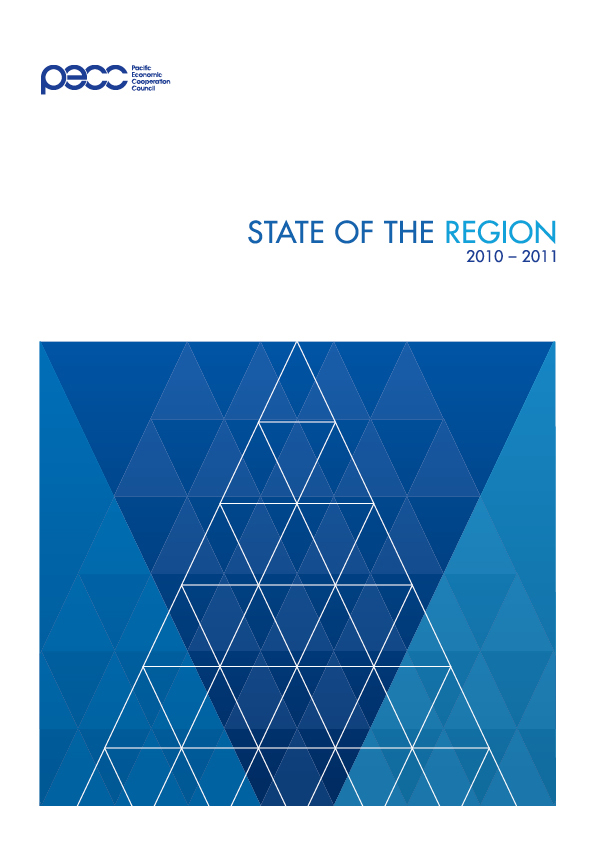 Even as the economic recovery from the downturn of 2009 gathers momentum across much of Asia-Pacific, there is great uncertainty in the region about the durability of the recovery. The risk of another economic downturn stems less from a renewed bout of financial sector problems than from a failure of international economic cooperation. The forthcoming G20 and APEC Summits provide an opportunity for leaders of major economies to address the current unsustainable pattern of global flows and to step back from the brink of currency and trade wars.
Even as the economic recovery from the downturn of 2009 gathers momentum across much of Asia-Pacific, there is great uncertainty in the region about the durability of the recovery. The risk of another economic downturn stems less from a renewed bout of financial sector problems than from a failure of international economic cooperation. The forthcoming G20 and APEC Summits provide an opportunity for leaders of major economies to address the current unsustainable pattern of global flows and to step back from the brink of currency and trade wars.
Chapter 1 describes the current economic environment and the pattern of recovery in the Asia-Pacific region over the last 12 months. It points out that the underlying problem of global savings-investment imbalances have not been resolved, and that these imbalances continue to weigh heavily on the world economy. To achieve a more sustainable growth path, the report stresses that the extraordinary fiscal interventions during the economic crisis of 2008 have to be unwound, and surplus countries have to rely less on exports for growth. This will require structural reforms in both deficit and surplus countries, and a high degree of international cooperation.
Financial regulatory reform in the advanced economies at the epicenter of the crisis is an ongoing priority. To achieve sustainable growth, financial institutions must also be willing to resume lending. A troublesome aspect of the recovery is the uncertainty around financial sector reforms, both because of pushback from powerful vested interests and the need to get the reforms right. In the troubled advanced economies the extraordinary support for the financial sector during the crisis has to be unwound and banks’ bad assets removed from their balance sheets. Risks of futureinstability also need to be reduced and ways found to tackle future financial crises without taxpayer support.
APEC has an opportunity to make a unique contribution to global rebalancing by showing regional leadership on structural reform. APEC leaders could commit to deliverables appropriate to surplus and deficit economies in such areas as regulatory reform of services sectors, the financing and provision of infrastructure, development of a low carbon economy, and capital market reforms to allocate capital resources more efficiently. Collective action in a number of these areas have the potential to be new growth engines for the region.
Highlights from our annual survey of regional opinion leaders are described in chapter 2. Across the Asia-Pacific region, opinion leaders are less optimistic about the prospects for growth over the next year than they were in last year’s State of the Region survey. Respondents were mixed in their expectations for growth over the next 12 months. Thirty-six percent of respondents expected global growth to be stronger over the next 12 months compared to 26 percent who thought it would be weaker. The biggest risk to growth was identified as weakness in the US economy.
We asked opinion leaders what they thought should be the top five priorities for APEC leaders when they meet in Yokohama. The top issues were as follows:
i) a post-crisis strategy for the region; ii) a free trade area of the Asia-Pacific; iii) the WTO Doha Development Round; iv) financial sector regulatory reform; and v) the region’s response to climate change.
Our survey highlights the importance of strengthened financial regulations across the world to achieve sustained growth as well as the rebalancing growth towards greater emphasis on domestic demand in East Asia.This rebalancing will require the kind structural reforms described in chapter 1 and elaborated in the PECC task force report on “Inclusive, Balanced, and Sustained Growth” released in 2009.
On trade issues, our survey underscores the need for more focus on behind the border issues such as intellectual property rights, standards and regulatory issues. These items were rated as the top 3 challenges to doing business in the region.
In chapter 3, we update our index of regional economic integration. In summary, the index shows a continued deepening of Asia-Pacific economic integration. However, the index also shows that while overall economic integration has increased, there are growing divergences in key development indicators such as real GDP per capita, education expenditure, and life expectancy. The growing divergence in these other areas, both among economies and within economies, threatens support for further liberalization of trade and investment in the region as well as the appetite forprecisely the kind of international cooperation that is needed today to avert global economic conflict.
default
State of the Region 2010 (1013.23 kB)

